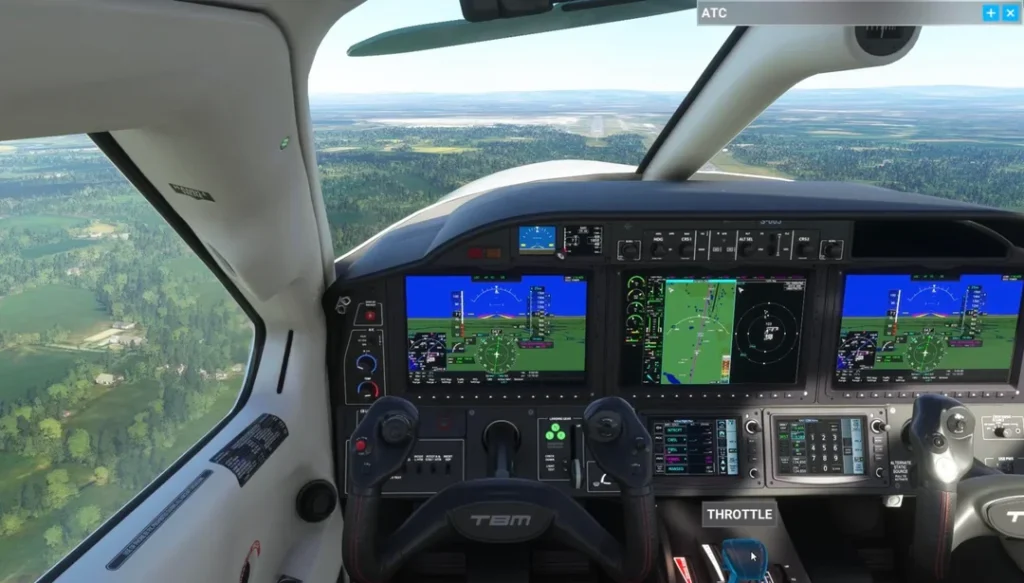Aviator Simulator Online – A Training Tool for Aviators
Online flight simulators help aviators develop their ability and knowledge in the perspective of a virtual flying environment. Real-life flying is replicated on these platforms to high degrees, where navigation, aircraft handling, and emergency procedures are just but a few things users can do.
Renowned simulators such as Microsoft Flight Simulator, X-Plane, and Prepar3D offer realistic graphics and physics. These tools serve as effective training aids, enabling pilots to get accustomed to flying different aircraft in different flight scenarios.
Importance of simulation in modern aviator training
Simulation plays a crucial role in modern aviator training by providing a safe and controlled environment for practice. In flight simulation, pilots engage in flying in realistic, high-fidelity settings without many of the risks associated with flying an aircraft. This virtual environment allows trainees to practice a range of scenarios, including methods of dealing with variable weather conditions, system failures, and emergencies of various types, safely on the ground.
Another significant advantage is cost-effectiveness. The cost of flying a simulator compared to maintaining an actual aircraft is much lower. This more available affordability enables more training sessions and speeds up the development of skills. Simulators make repetition possible, which permits pilots to fine-tune their techniques and decision-making skills effectively.
Moreover, flight simulators are instrumental in the process of training pilots for certification. They provide opportunities to practice essential manoeuvres and protocols that are critical during actual flights. This practice leads to greater preparedness in making the progression to real aircraft since one can develop confidence and competence before going into the skies.

Features of the Aviator Simulator Online
The Aviator simulator online offers several key features designed to enhance pilot training in a virtual environment.
- Safe and Controlled Training Environment: The simulator allows a virtual space where pilots can practice a wide range of flight scenarios devoid of real-world consequences. Safety would afford the trainees the opportunity to get into those critical situations that include system failure or adverse weather conditions as ways in which they learn to respond effectively.
- Cost-Effective Solution for Pilot Training: The operation of a flight simulator is much cheaper than the cost incurred while maintaining actual aircraft. This would then make it more affordable for training institutions to provide more and more sessions. As trainees can get more flying hours without bearing the expenses of fuel, maintenance, and aircraft wear, this again enables them to put more hours into flying.
- Real-Time Feedback and Skill Assessment: The Aviator Simulator Online has integrated features within the design for real-time performance feedback. The pilots can track their progress, identify strengths and weaknesses, and adjust the training as needed.
- Realistic Flight Dynamics: The simulator mimics real-world flight dynamics, making it easier for pilots to transition to actual flying. The accurate physics engine allows for an authentic experience, reinforcing muscle memory and decision-making skills.
- Variety of Aircraft Models: The platform offers access to multiple aircraft types, from light planes to commercial airliners. This variety helps pilots become familiar with different controls and systems.
Types of Training Available in the Aviator Simulator
The simulator Aviator provides several kinds of training, targeting different levels of a pilot’s competence. Each type addresses the development of particular types of competencies relevant to flying.
How to Access and Use the Aviator Simulator Online
Accessing and using the Aviator Simulator APK Online involves several requirements and steps to ensure a smooth experience. Here are the essential components needed:
| Hardware | Software | Internet Connection |
| A computer with a dual-core processor or better. At least 8 GB of RAM. A dedicated graphics card with 2 GB VRAM for optimal graphics. A minimum of 10 GB of free disk space. | Operating system compatible with Windows 10 or newer or macOS 10.15 and above. The latest version of the Aviator Simulator is installed. | A stable connection with a minimum speed of 5 Mbps. |

Follow the next steps to sign up and get started with sky aviator software:
- Visit the official simulator on the aviator’s official website.
- Click on the “Sign Up” button.
- Fill in the required personal information and create an account.
- Confirm the email address by clicking the aviator link sent to the registered email.
- Log in to the account.
Use customizable settings for individual online aviator training needs:
- Navigate to the settings menu after logging in.
- Adjust controls according to personal preferences, including joystick or keyboard settings.
- Configure graphics options to balance performance and visuals based on hardware capabilities.
- Set training scenarios to focus on specific skills, such as navigation or emergency procedures.
Importance of Simulators in Pilot Certification and Licensing
Aviator plane simulators play a crucial role in pilot certification and licensing, offering a practical and efficient means of gaining flight experience. The opportunity can be availed in logging flight hours without risk factors associated with flying.
Integration with pilot certification programs is increasingly common. Most of the training institutions include simulator time while ensuring that the threshold flight hour pixmap for the required certification is met.
That is to say, for simulator flying to be credited toward flight-hour requirements, aviation authorities such as the FAA and EASA ensure that regulatory standards are upheld. To begin with, simulators should meet strict criteria so that they reasonably approximate actual flight conditions. This shall be done in order to ensure that pilots gain relevant experience.
Feedback from Pilots and Trainees
Feedback from pilots and trainees who have used aviator flight simulators in India reveals valuable insights into their effectiveness in pilot training. Many student aviators highlight the safety aspect of simulators, noting that they can practice critical manoeuvres without the risks associated with real aircraft. One trainee mentioned, “It felt great to simulate an emergency landing without any real-world consequences. It helped build my confidence.”
Another common theme in feedback is the ability to replicate various flying conditions. A student shared, “The simulator allowed me to experience flying in bad weather, something I couldn’t do in training flights. It prepared me for real challenges. This feature is particularly appreciated by those pursuing instrument ratings, as it enables focused practice on navigation and instrument usage.
Trainees also appreciate the immediate feedback provided by simulators. One pilot noted, “After each session, I received detailed performance data that highlighted my strengths and areas for improvement. This helped me focus my training efforts effectively.”
Additionally, many pilots express that using simulators significantly enhances their overall training experience. A recent graduate stated, “The time spent in the simulator was invaluable. It complimented my flight hours and helped me feel ready for my check-ride.”
Enhancing Aviator Skills with Online Simulator!
An online wing simulator enhances a number of skills in aviators and provides a number of benefits to the budding pilot: practice essential manoeuvres and procedures for emergencies, all in a safe environment with no real-flight risks; log valuable flight hours that go toward your overall training requirement.
The most important thing is the possibility of simulating different kinds of weather and an extensive range of flight situations. Thus, it exposes pilots to actual scenarios that will help them gain better confidence to make better decisions in real life. Also, immediate feedback on the performance provides an overview of strong and weak points, allowing the latter to sharpen up.
The online simulator can really speed up the process of developing a skill; therefore, it is a very important tool in pilot training; and aspiring pilots are encouraged to use such facilities because they complement flight training that students normally undergo and develop them into proficient aviators.
